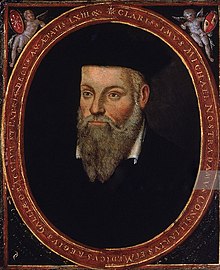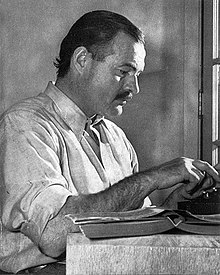July 2 is the 183rd day of the year (184th in leap years) in the Gregorian calendar. There are 182 days remaining until the end of the year.
This day is the midpoint of a common year because there are 182 days before and 182 days after it in common years, and 183 before and 182 after in leap years. The exact time of the middle of the year is at noon. In countries that use summer time the actual exact time of the midpoint in a common year is at 1:00 p.m, or 11:00 a.m for countries in the southern hemisphere; this is when 182 days and 12 hours have elapsed and there are 182 days and 12 hours remaining. In a leap year in those countries, the midpoint occurs at 1:00 a.m. on July 2, or 11:00pm on July 1 in the southern hemisphere. This is due to summer time having advanced the time by one hour. It falls on the same day of the week as New Year’s Day in common years.
Holidays
- Christian Feast Day:
- Flag Day (Curaçao)
- Independence Day (Bahia)
- Palio di Provenzano (Siena)
- Police Day (Azerbaijan)
- World UFO Day
History
In 437, Emperor Valentinian III begins his reign over the Western Roman Empire. His mother Galla Placidia ends her regency, but continues to exercise political influence at the court in Rome.
In 626, Li Shimin, the future Emperor Taizong of Tang, ambushes and kills his rival brothers Li Yuanji and Li Jiancheng in the Xuanwu Gate Incident.
In 706, In China, Emperor Zhongzong of Tang inters the bodies of relatives in the Qianling Mausoleum, located on Mount Liang outside Chang’an.
In 963, The imperial army proclaims Nicephorus Phocas Emperor of the Romans on the plains outside Cappadocian Caesarea.
In 1298, The Battle of Göllheim is fought between Albert I of Habsburg and Adolf of Nassau-Weilburg.
In 1494, The Treaty of Tordesillas is ratified by Spain.
In 1504, Bogdan III the One-Eyed becomes Voivode of Moldavia.
In 1555, The Ottoman Admiral Turgut Reis sacks the Italian city of Paola.
In 1561, Menas, Emperor of Ethiopia, defeats a revolt in Emfraz.
In 1566, Nostradamus, French astrologer and author (b. 1503) dies. He usually Latinised as Nostradamus, was a French apothecary and reputed seer who published collections of prophecies that have since become famous worldwide. He is best known for his book Les Propheties, the first edition of which appeared in 1555. Since the publication of this book, which has rarely been out of print since his death, Nostradamus has attracted a following that, along with much of the popular press, credits him with predicting many major world events. Most academic sources maintain that the associations made between world events and Nostradamus’s quatrains are largely the result of misinterpretations or mistranslations (sometimes deliberate) or else are so tenuous as to render them useless as evidence of any genuine predictive power.
In 1582, Battle of Yamazaki: Toyotomi Hideyoshi defeats Akechi Mitsuhide.
In 1613, The first English expedition from Massachusetts against Acadia led by Samuel Argall takes place.
In 1644, English Civil War: Battle of Marston Moor.
In 1698, Thomas Savery patents the first steam engine.
In 1776, The Continental Congress adopts a resolution severing ties with the Kingdom of Great Britain although the wording of the formal Declaration of Independence is not approved until July 4.
In 1777, Vermont becomes the first American territory to abolish slavery.
In 1816, The French frigate Méduse struck the Bank of Arguin and 151 people on board had to be evacuated on an improvised raft, a case immortalised by Géricault‘s painting Raft of the Medusa.
In 1822, Thirty-five slaves are hanged in South Carolina, including Denmark Vesey, after being accused of organizing a slave rebellion.
In 1822, Denmark Vesey, American slave (b. 1767) was hung. He was a free black and former slave in Charleston, South Carolina who is noted for his plan for “the rising,” a major slave revolt in 1822; by some accounts, it would have involved thousands of slaves in the city and others on plantations miles away. A skilled carpenter, Vesey had won a lottery and purchased his freedom at age 32 in 1799. He had a good business and a family, but was not able to buy his wife and children out of slavery. Vesey became active in the Second Presbyterian Church; in 1818 he was among the founders of an AME Church in the city, which later became Emanuel African Methodist Episcopal Church. The first independent black denomination in the nation, it had recently been organized in Philadelphia, Pennsylvania. The AME Church was supported by white clergy in the city and rapidly attracted 1,848 members, making this the second-largest AME congregation in the nation. City officials twice closed it for violating slave laws related to times and purpose of gatherings.
Vesey and his followers were said to be planning to kill slaveholders in Charleston, liberate the slaves, and sail to the black republic of Haiti for refuge. Word of the plan was leaked, and city officials had a militia arrest the plot’s leaders and many suspected followers in June before the rising could begin. Not one white person was killed or injured. Vesey and five slaves were among the first group of men rapidly judged guilty by the secret proceedings of a city-appointed Court and condemned to death; they were executed by hanging on July 2, 1822. Vesey was about age 55. Later one of his sons was judged guilty of this conspiracy and was among many blacks deported from the United States.
In 1823, Bahia Independence Day: The end of Portuguese rule in Brazil, with the final defeat of the Portuguese crown loyalists in the province of Bahia.
In 1839, Twenty miles off the coast of Cuba, 53 rebelling African slaves led by Joseph Cinqué take over the slave ship Amistad.
In 1839, Abdülmecid I became Sultan of the Ottoman Empire and Caliph of Islam.
In 1853, The Russian Army crossed the Pruth river into the Danubian Principalities, Moldavia and Wallachia—providing the spark that set off the Crimean War.
In 1871, Victor Emmanuel II of Italy enters Rome after having conquered it from the Papal States.
In 1881, Charles J. Guiteau shoots and fatally wounds U.S. President James Garfield, who eventually dies from an infection on September 19.
In 1890, The U.S. Congress passes the Sherman Anti-Trust Act.
In 1897, Italian scientist Guglielmo Marconi obtains a patent for radio in London.
In 1900, The first Zeppelin flight takes place on Lake Constance near Friedrichshafen, Germany.
In 1900, Jean Sibelius‘ Finlandia receives its première performance in Helsinki with the Helsinki Philharmonic Society conducted by Robert Kajanus.
In 1917, The East St. Louis Riots end.
In 1921, World War I: U.S. President Warren G. Harding signs the Knox–Porter Resolution formally ending the war between the United States and Imperial Germany.
In 1934, The Night of the Long Knives ends with the death of Ernst Röhm.
In 1937, Amelia Earhart and navigator Fred Noonan are last heard from over the Pacific Ocean while attempting to make the first equatorial round-the-world flight.
In 1940, Indian independence leader Subhas Chandra Bose is arrested and detained in Calcutta.
In 1950, The Golden Pavilion at Kinkaku-ji in Kyoto, Japan burns down.
In 1961, Ernest Hemingway, American journalist and author, Nobel Prize laureate (b. 1899) dies. He was an American author and journalist. His economical and understated style had a strong influence on 20th-century fiction, while his life of adventure and his public image influenced later generations. Hemingway produced most of his work between the mid-1920s and the mid-1950s, and won the Nobel Prize in Literature in 1954. He published seven novels, six short story collections, and two non-fiction works. Additional works, including three novels, four short story collections, and three non-fiction works, were published posthumously. Many of his works are considered classics of American literature.
In 1962, The first Wal-Mart store opens for business in Rogers, Arkansas.
In 1964, U.S. President Lyndon B. Johnson signs the Civil Rights Act of 1964 meant to prohibit segregation in public places.

In 1964, Fireball Roberts, American race car driver (b. 1929) qualified at the World 600 in Charlotte, Roberts had qualified in the eleventh position and started in the middle of the pack. On lap seven, Ned Jarrett and Junior Johnson collided and spun out and Roberts crashed trying to avoid them. Roberts’ Ford slammed backward into the inside retaining wall, flipped over and burst into flames. Witnesses at the track claimed they heard Roberts screaming, “Ned, help me”, from inside his burning car after the wreck. Jarrett rushed to save Roberts as his car was engulfed by the flames. Roberts suffered second- and third-degree burns over eighty percent of his body and was airlifted to a hospital in critical condition. Although it was widely believed that Roberts had an allergic reaction to flame-retardant chemicals, he was secretly an asthmatic, and the chemicals made his breathing worse. Roberts was able to survive for several weeks, and it appeared he might pull through, but he took a turn for the worse on June 30, 1964. He contracted pneumonia and sepsis and had slipped into a coma by the next day. Roberts died from his burns on July 2, 1964. He was one of the pioneering race car drivers of NASCAR.
In 1966, The French military explodes a nuclear test bomb codenamed Aldébaran in Mururoa, their first nuclear test in the Pacific.
In 1976, Fall of the Republic of Vietnam; Communist North Vietnam declares their union to form the Socialist Republic of Vietnam.
In 1986, Rodrigo Rojas and Carmen Gloria Quintana were burnt alive during a street demonstration against the dictatorship of General Augusto Pinochet in Chile.
In 1997, James Stewart, American actor and singer (b. 1908) dies at the age of 89 at his home in Beverly Hills, California, with his final words to his family being “I’m going to be with Gloria now!” He was an American film and stage actor, known for his distinctive drawl voice and down-to-earth persona. Over the course of his career, he starred in many films widely considered classics. He was known for portraying the American middle class man with everyday life struggles.
Stewart was nominated for five Academy Awards, winning one in competition and receiving one Lifetime Achievement award. Stewart was named the third greatest male screen legend in cinema history by the American Film Institute. He was a major Metro-Goldwyn-Mayer contract star. He also had a noted military career and was a World War II and Vietnam War veteran, who rose to the rank of Brigadier General in the United States Air Force Reserve.
The actor Cary Grant said of Stewart’s acting technique:
He had the ability to talk naturally. He knew that in conversations people do often interrupt one another and it’s not always so easy to get a thought out. It took a little time for the sound men to get used to him, but he had an enormous impact. And then, some years later, Marlon came out and did the same thing all over again—but what people forget is that Jimmy did it first.
In 2000, Vicente Fox Quesada is elected the first President of México from an opposition party, the Partido Acción Nacional, after more than 70 years of continuous rule by the Partido Revolucionario Institucional.
In 2001, The AbioCor self-contained artificial heart is first implanted.
In 2002, Steve Fossett becomes the first person to fly solo around the world nonstop in a balloon.
In 2005, The Live 8 benefit concerts takes place in the G8 states and in South Africa, More than 1,000 musicians performed and are broadcast on 182 television networks and 2,000 radio networks.

In 2013, Douglas Engelbart, American computer scientist, invented the computer mouse (b. 1925) dies. He was an American engineer and inventor, and an early computer and Internet pioneer. He is best known for his work on founding the field of human–computer interaction, particularly while at his Augmentation Research Center Lab in SRI International, which resulted in the invention of the computer mouse, and the development of hypertext, networked computers, and precursors to graphical user interfaces. These were demonstrated at The Mother of All Demos in 1968. Engelbart’s Law, the observation that the intrinsic rate of human performance is exponential, is named after him.

In the early 1950s, he decided that instead of “having a steady job” – such as his position at NASA’s Ames Research Center – he would focus on making the world a better place. He reasoned that because the complexity of the world’s problems were increasing, and that any effort to improve the world would require the coordination of groups of people, the most effective way to solve problems was to augment human intelligence and develop ways of building collective intelligence. He believed that the computer, which was at the time thought of only as a tool for automation, would be an essential tool for future knowledge workers to solve such problems. He was a committed, vocal proponent of the development and use of computers and computer networks to help cope with the world’s increasingly urgent and complex problems. Engelbart embedded a set of organizing principles in his lab, which he termed “bootstrapping”. His belief was that when human systems and tool systems were aligned, such that workers spent time “improving their tools for improving their tools” it would lead to an accelerating rate of progress.
In 2013, The International Astronomical Union names Pluto’s fourth and fifth moons, Kerberos and Styx.
In 2013, A magnitude 6.1 earthquake strikes Aceh, Indonesia, killing at least 42 people and injuring 420 others.

In 2014, Louis Zamperini, American runner and captain (b. 1917) actually died twice. His death had mistakenly been announced previously, when the US government classified him as killed in action during World War II, after his crew’s borrowed B-24 Liberator aircraft, The Green Hornet went down in 1943, and no survivors were located by the military. President Franklin D. Roosevelt even sent Zamperini’s parents a formal condolence note in 1944. Zamperini’s death came 70 years later, from pneumonia, on July 2, 2014, in Los Angeles, at home, aged 97. He was a US prisoner of war survivor in World War II, a Christian evangelist and an Olympic distance runner.
Zamperini took up running in high school and qualified for the US in the 5000m race for the 1936 Berlin Olympics. In 1941, he was commissioned into the United States Army Air Forces as a lieutenant. He served as a bombardier in B-24 Liberators in the Pacific. On a search and rescue mission, mechanical difficulties forced Zamperini’s plane to crash in the ocean. After drifting at sea for 46–47 days (island spotted on the 46th, and arrived on 47th) he landed on the Japanese occupied Marshall Islands and was captured. He was taken to a prison camp in Japan where he was tortured. Following the war he initially struggled to overcome his ordeal. Later he became a Christian Evangelist with a strong belief in forgiveness. Since 1952 he devoted himself to at-risk youth which his family continues today. Zamperini is the subject of two biographical films, the 2014 Unbroken and the 2015 Captured by Grace.
In 2015, A bridge collapses under a Pakistan Army train at Gujranwala, killing nineteen and injuring over 100
In 2015, A ferry capsizes in Ormoc, Leyte, Philippines, killing 62 of 220 passengers.
In 2016, Suicide bombing of Karrada in Baghdad kills at least 341 people.




